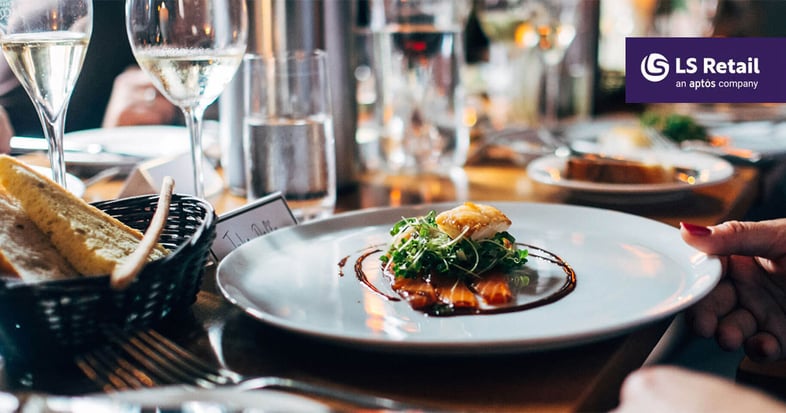7 ways to cut costs at your restaurant without sacrificing quality

Running a restaurant means juggling high expectations and tight margins. Cutting costs is necessary, but done wrong, it can damage your reputation and drive customers away.
Here are 7 smart, practical ways to reduce expenses without compromising on food quality or guest satisfaction.
1. Use a unified system to control costs across your business
Many restaurants still rely on a patchwork of disconnected tools to run daily operations. But when you unify your sales, inventory, kitchen, and staffing data into one system, you get the full picture — and the ability to act on it.
With a comprehensive management platform, you can:
- Keep track of stock across all locations in real time
- Avoid over-ordering and reduce food waste
- Adjust purchasing based on actual sales trends and customer behavior
- Manage staff scheduling more effectively
- Spot which menu items are eating into your margins
Mobile access is also essential. When your staff can take orders tableside or check availability on the go, you reduce errors, speed up service, and turn more tables during peak hours.
If you’re looking for a system that can handle all of this, LS Central for restaurants is one option that brings these capabilities into a single platform, helping restaurants make informed decisions, run leaner, and respond faster to changing conditions.
2. Simplify your menu using real data
A large menu might seem like a way to please everyone, but in practice, it creates waste, slows down service, and increases training time. The smarter move is to focus on dishes that deliver consistent quality, sell well, and bring in strong margins.
Your POS and sales data can tell you:
- Which dishes are rarely ordered
- Which ones have high prep costs or require hard-to-stock ingredients
- Which ones could be modified or grouped to use overlapping inventory
A tighter menu means less stock on hand, faster prep, and more confidence from your kitchen staff, especially during busy shifts.
3. Offer digital ordering and self-service options
Digital ordering isn’t just about convenience, it’s a cost-saving tool. Letting customers place orders via self-service kiosks or QR codes reduces the need for order-takers, cuts down on mistakes, and often increases average spend.
Self-ordering tools also allow you to:
- Free up staff to handle more value-added tasks
- Keep service running smoothly during labor shortages
- Reduce wait times and improve the guest experience
Whether it’s for dine-in, takeaway, or delivery, digital ordering helps you serve more customers with fewer resources.
4. Use dynamic pricing and daypart specials
Pricing doesn’t need to be fixed all day, every day. Offering time-based specials — like early dinner discounts or weekday lunch deals — can help fill seats during slower periods and spread out customer flow.
Use your data to identify low-traffic windows, then:
- Introduce limited-time pricing to attract traffic
- Bundle high-margin items into set menus or combos
- Promote slower-moving items at a better value
This targeted approach increases revenue without lowering your overall pricing strategy or profitability.
5. Consolidate vendors and simplify deliveries
Every extra delivery adds hidden costs: freight fees, processing time, and more complexity in your back office. Working with fewer vendors and planning deliveries more carefully can cut those costs significantly.
You can:
- Combine product categories under fewer suppliers
- Align delivery days to reduce disruption
- Negotiate better pricing through volume
It also makes inventory management simpler and helps avoid mistakes when receiving and storing goods.
6. Collaborate with nearby businesses to share resources
You’re not the only business trying to save money. Local collaboration can open up creative ways to cut costs — and strengthen your community ties.
For example, you can:
- Partner with nearby cafés or restaurants to co-purchase goods
- Share delivery schedules or distribution costs
- Cross-promote events or menus to boost traffic for everyone
These partnerships don’t require formal contracts — just a shared mindset and open communication.
7. Invest in energy-saving and sustainable operations
Going green doesn’t have to be expensive. In fact, some of the best sustainability practices are also smart cost-saving moves.
Consider:
- Swapping out old lighting for LEDs
- Installing low-flow taps or energy-efficient appliances
- Switching to compostable or plain takeout packaging
- Providing extras like napkins or cutlery only when requested
Small changes like these can significantly lower utility bills and reduce waste. Depending on your location, you may also qualify for rebates or tax benefits when upgrading to more efficient systems.
And increasingly, customers notice, and reward, restaurants that make environmentally responsible choices.
Cutting costs doesn’t mean lowering your standards. With the right tools and a few practical changes, you can protect your margins while continuing to deliver the quality your guests expect.
If you’d like help evaluating whether your current tech setup is helping or holding you back, reach out to our experts. Our restaurant experts can help you find the right system for your goals.

